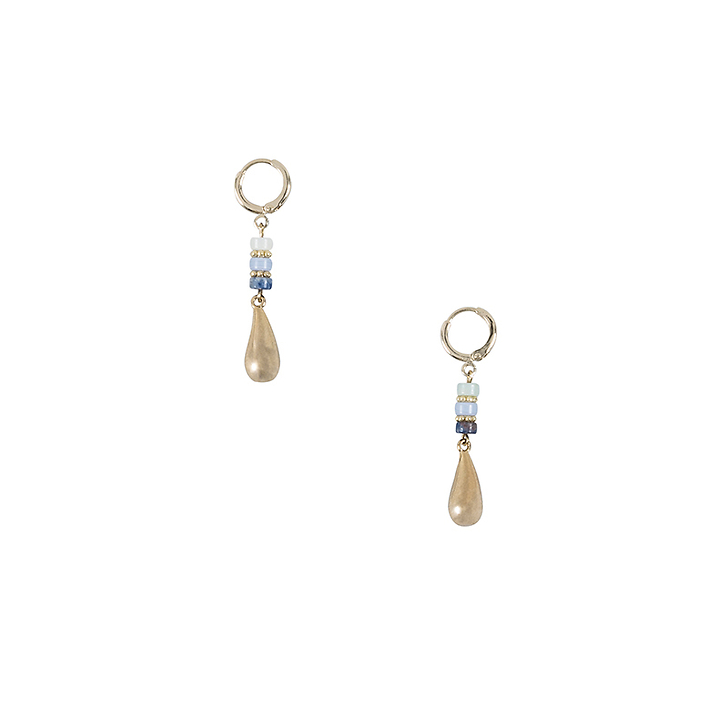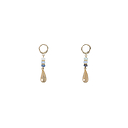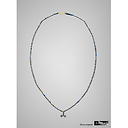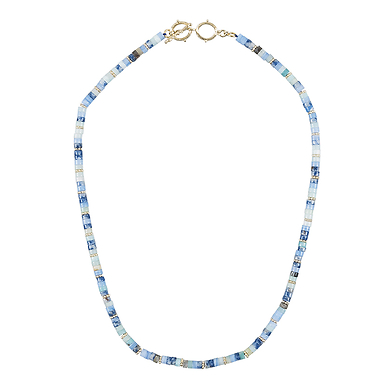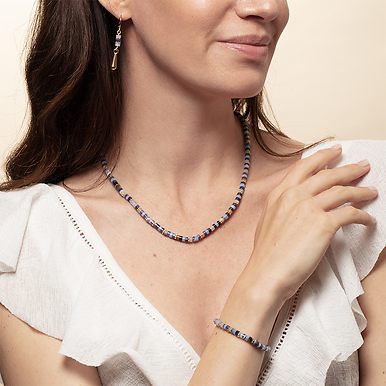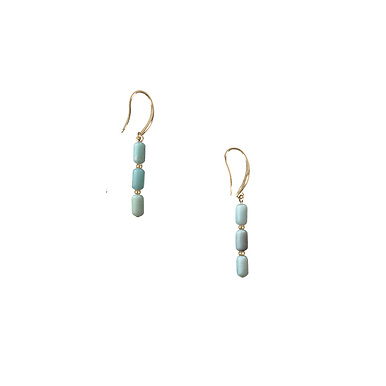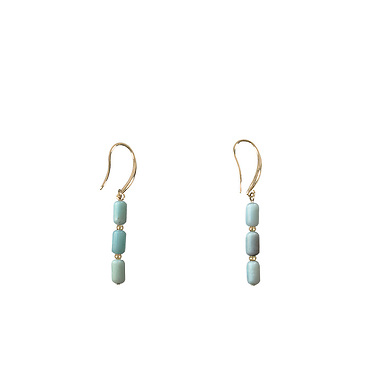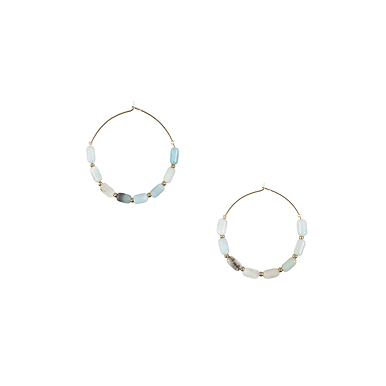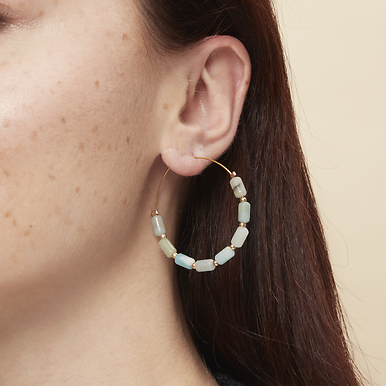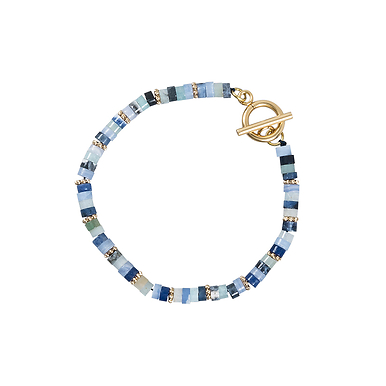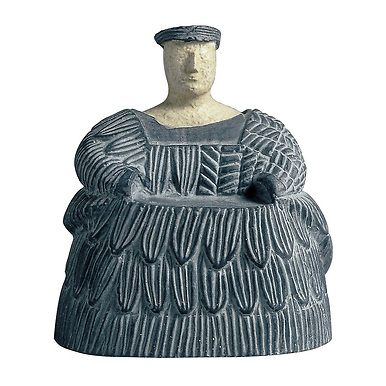Pendant earrings Bactriana
BW700011
These earrings made of fluorite, sodalite and gilded brass beads are inspired by a so-called Bactrian necklace with small cylindrical lapis lazuli beads combined with thirty gold beads and a rod-shaped pendant bearing two discs (Bactria, -2100 / -1900 (2nd half of 3rd mill BC (?)).
The region on either...
Read more
These earrings made of fluorite, sodalite and gilded brass beads are inspired by a so-called Bactrian necklace with small cylindrical lapis lazuli beads combined with thirty gold beads and a rod-shaped pendant bearing two discs (Bactria, -2100 / -1900 (2nd half of 3rd mill BC (?)).
The region on either side of the Amu Darya River, formerly the Oxus, was called Bactria in ancient times. It currently includes northern Afghanistan and Soviet Uzbekistan.
Bactria was in antiquity (and still in the Middle Ages) a place of cultural and religious abundance, a crossroads of civilizations, because of its location: it was at the contact of four worlds (today India, the steppes, Iran, and China), its two capitals, Bactria and Termez, were on one of the branches of what will become the Silk Road, and it was crossed by a large number of military routes.
At the beginning of the 2nd millennium BC, Bactria had intense relations with the whole of Iran and with regions beyond, such as the Indus Valley. Numerous artistic productions of great luxury were developed there in various materials: chlorite, alabaster, arsenic copper, silver, lapis lazuli, etc. It was in Bactria that lapis lazuli, a stone found only in a few high mountain areas, was first exploited.
Close
Login to see prices
Sold by GrandPalaisRmn

